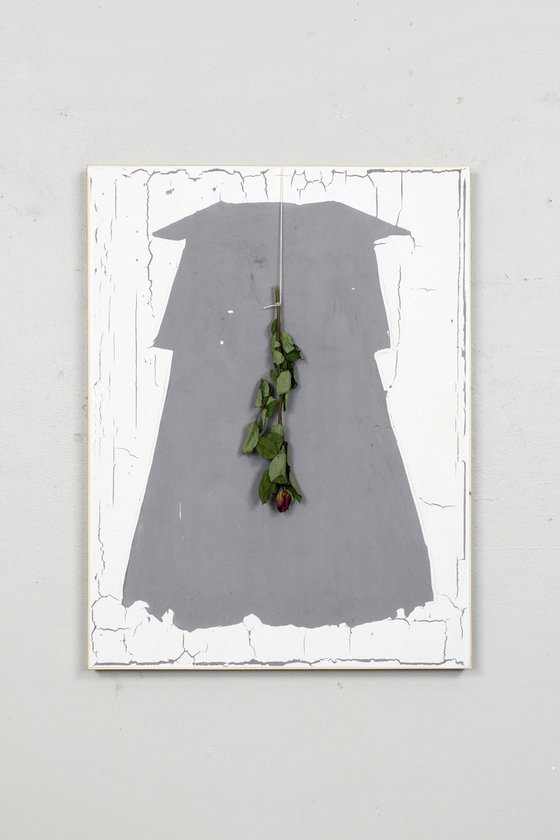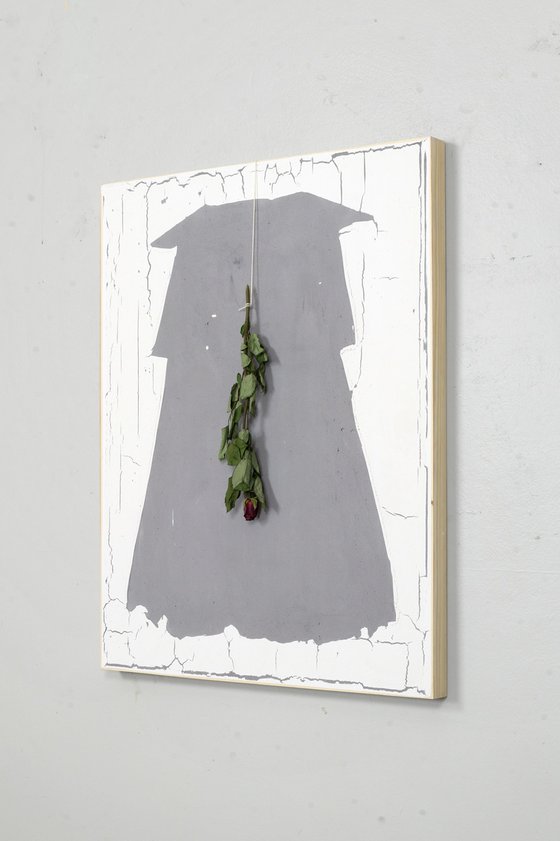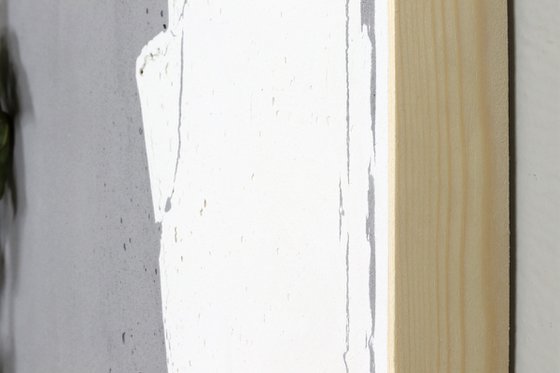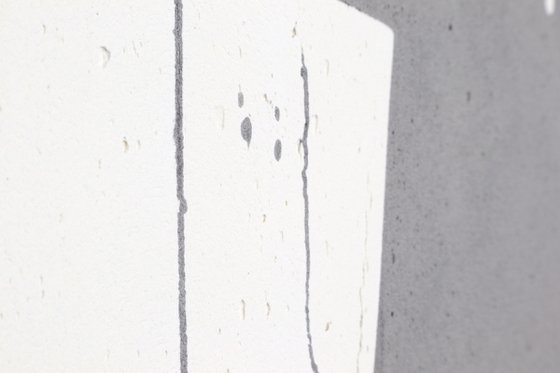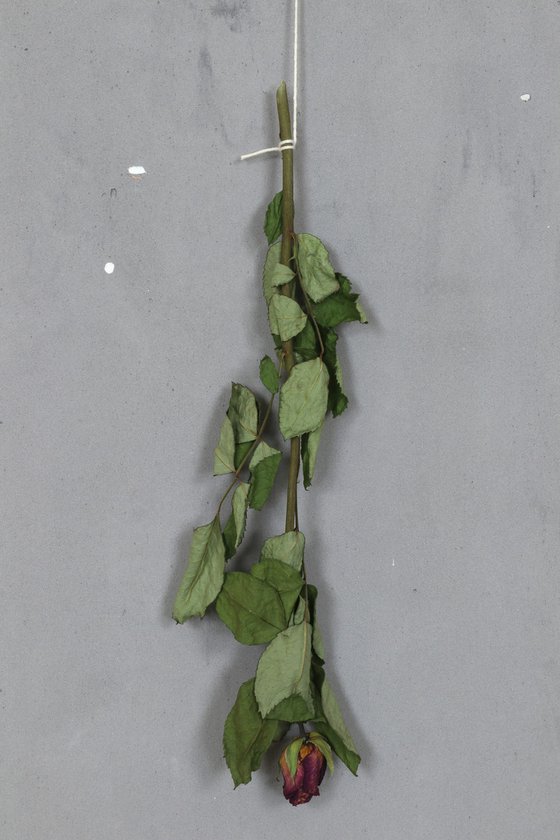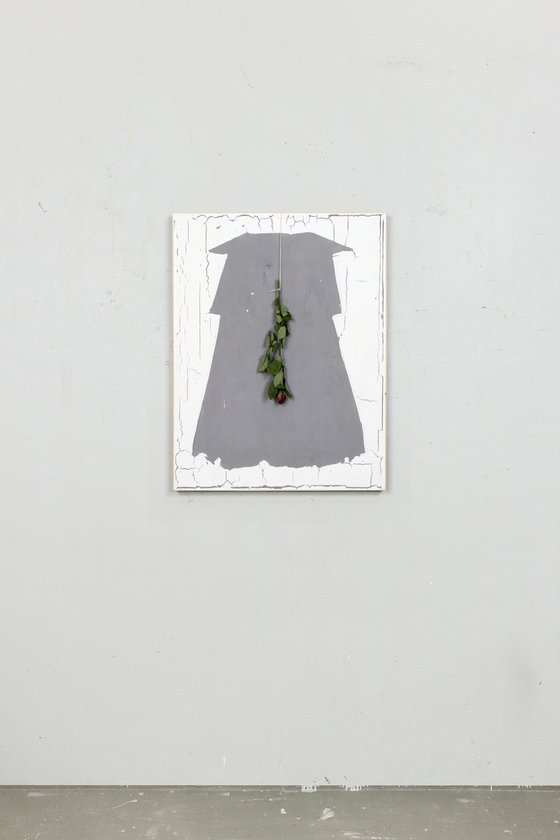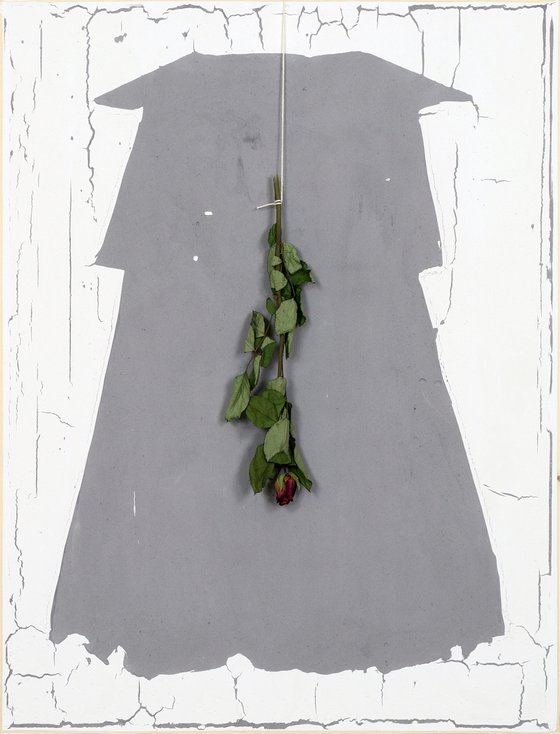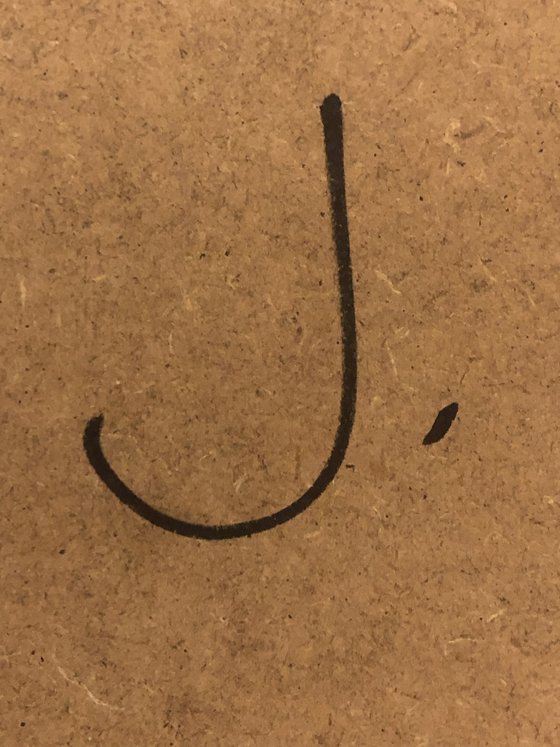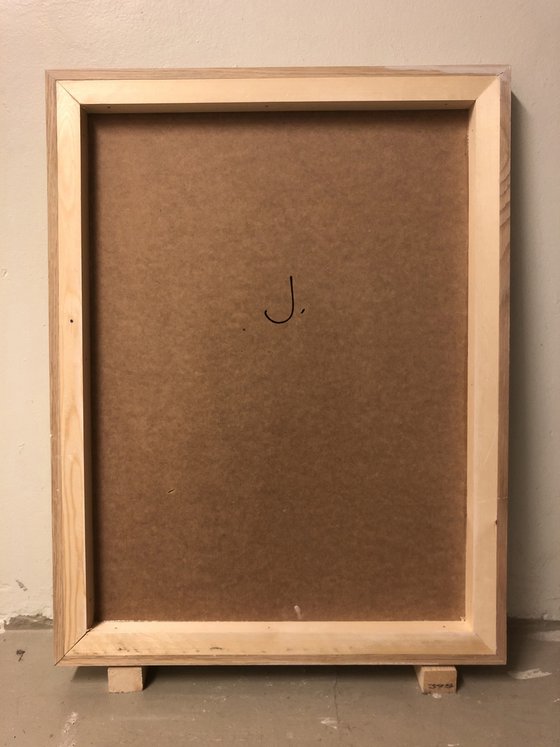Main Navigation
Original artwork description:
64x84 cm | Filler, pine panel, cotton string, dried rose
This painting features a drawing of a silhouette from my childhood in Torshälla, Sweden— depicting an old, abandoned windmill (without its wings).
The work is titled Pomperipossa, after a famous text that Swedish writer Astrid Lindgren published in the newspaper Expressen in 1976. It is a fairytale allegory about the witch Pomperipossa in Monismanien, in which Lindgren criticises her extremely high marginal tax rate. She claimed it amounted to 102%, though in reality the top rate at the time was around 87%. The story caused a stir: Gösta Bohman, leader of the Conservative Party, even read it aloud in parliament, and many believe it contributed to the Social Democrats losing the election for the first time in 40 years.
A marginal tax is the rate applied to income above a certain threshold in a progressive tax system. Lindgren’s complaint about high taxation of the wealthy echoed the neoliberal arguments that were gaining ground at the time. Yet she remained a Social Democrat throughout her life, which makes her fight against high taxes somewhat reminiscent of Don Quixote’s futile struggle against windmills. She believed she was fighting for fairness. But progressive taxation—a tool traditionally associated with socialist or left-wing ideals—is grounded in the principle of human equality. It rejects the notion that the wealthy “deserve” more. In a truly equal society, people may differ in talent, circumstance, and ambition, but no one should be allowed to hoard excessive wealth.
The work features a dried rose hanging from the top of the panel, perhaps a metaphor for the lost promise of social democracy.
Materials used:
Filler (coarse and fine) in pine panel
Tags:
#calm #white #minimalism #arte povera #wabi sabi#562 Pomperipossa (2025) Painting
by Johan Söderström
1 Artist Reviews
£1,659.65
- Painting on Panel / Board / MDF
- One of a kind artwork
- Size: 64 x 84 x 5cm (framed)
- Framed and ready to hang
- Signed on the back
- Style: Organic
- Subject: Abstract and non-figurative
Loading
Original artwork description
64x84 cm | Filler, pine panel, cotton string, dried rose
This painting features a drawing of a silhouette from my childhood in Torshälla, Sweden— depicting an old, abandoned windmill (without its wings).
The work is titled Pomperipossa, after a famous text that Swedish writer Astrid Lindgren published in the newspaper Expressen in 1976. It is a fairytale allegory about the witch Pomperipossa in Monismanien, in which Lindgren criticises her extremely high marginal tax rate. She claimed it amounted to 102%, though in reality the top rate at the time was around 87%. The story caused a stir: Gösta Bohman, leader of the Conservative Party, even read it aloud in parliament, and many believe it contributed to the Social Democrats losing the election for the first time in 40 years.
A marginal tax is the rate applied to income above a certain threshold in a progressive tax system. Lindgren’s complaint about high taxation of the wealthy echoed the neoliberal arguments that were gaining ground at the time. Yet she remained a Social Democrat throughout her life, which makes her fight against high taxes somewhat reminiscent of Don Quixote’s futile struggle against windmills. She believed she was fighting for fairness. But progressive taxation—a tool traditionally associated with socialist or left-wing ideals—is grounded in the principle of human equality. It rejects the notion that the wealthy “deserve” more. In a truly equal society, people may differ in talent, circumstance, and ambition, but no one should be allowed to hoard excessive wealth.
The work features a dried rose hanging from the top of the panel, perhaps a metaphor for the lost promise of social democracy.
Materials used:
Filler (coarse and fine) in pine panel
Tags:
#calm #white #minimalism #arte povera #wabi sabi14 day money back guaranteeLearn more
